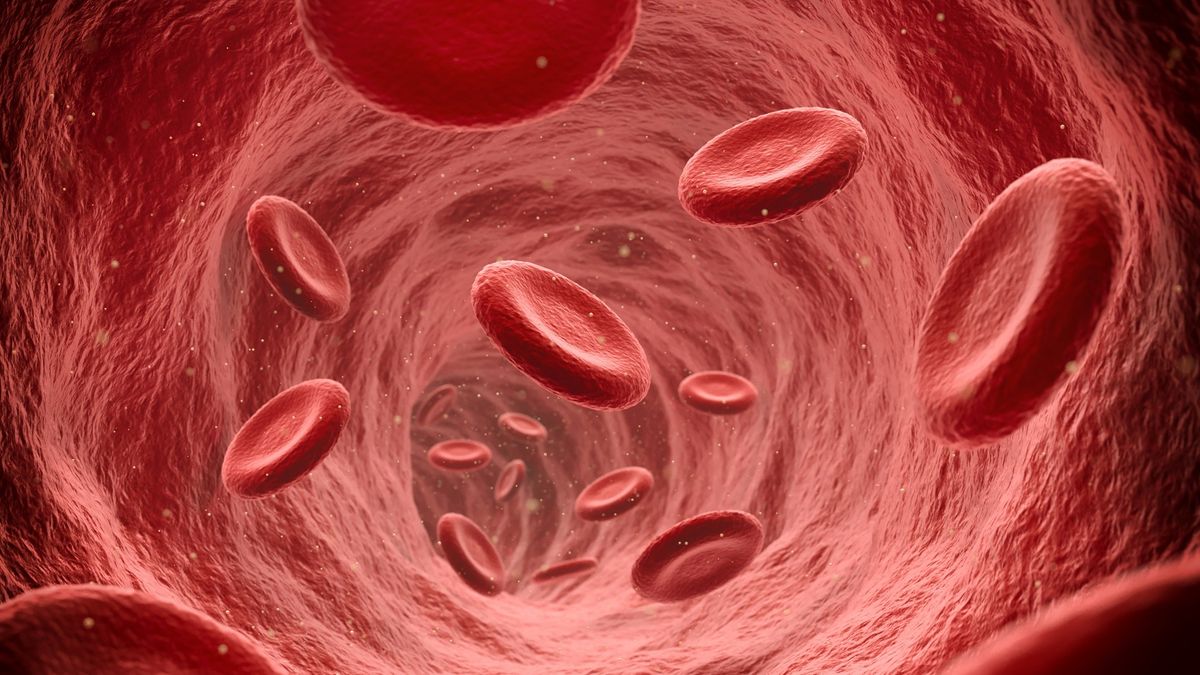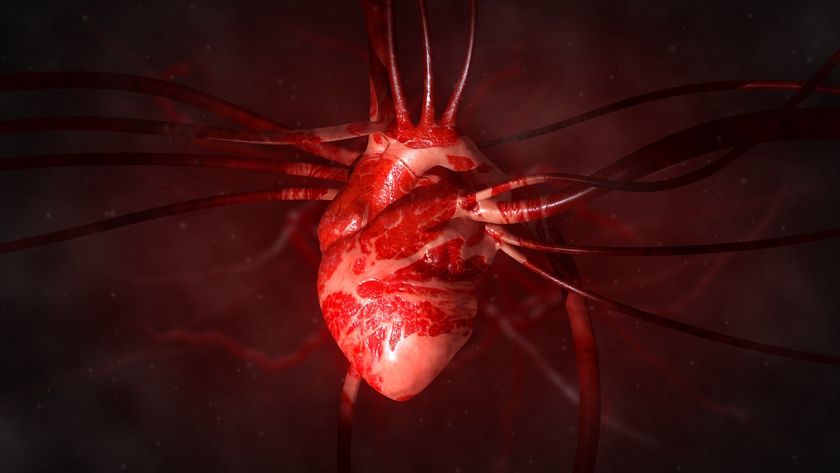
If blood is red, why do veins look bluish?
It’s a common misconception that oxygen-poor blood is blue.

It's commonly said that oxygen-rich blood is red, while oxygen-poor blood is blue. But is that really true?
In a word, no. Blood is always red. Every molecule of hemoglobin — a protein in red blood cells that carries oxygen — contains four atoms of iron, which reflect red light and so give our blood the red color. The shade of red changes depending on the level of oxygen in the blood. When the hemoglobin picks up oxygen in the lungs, the blood is a bright cherry red as it heads into the arteries and out to the tissues around your body.
But on the return trip to the lungs, after the blood cells have delivered the oxygen to tissues throughout the body, the deoxygenated blood flowing through veins is a much darker red, according to Dr. Kleber Fertrin, an assistant professor of hematology at the University of Washington School of Medicine in Seattle.
Related: Why do we have different blood types?
So, blood has different variations of red, but there is never a time when human blood is blue. You've likely witnessed this if you've had blood drawn: A needle slides into a blue- or green-looking vein, but the blood that trickles into the vial is the dark, burgundy-colored deoxygenated blood.
"[The blue or green vein] is almost like an illusion caused by the fact that [the vein is] under this small but significant layer of skin," Fertrin told Live Science. "The colors we see are based on the wavelength that our retina perceives." And varying layers of skin make the wavelengths scatter in different ways, he said. Under darker skin, veins often appear green. And they can appear blue or purplish under lighter skin tones. That’s because green and blue wavelengths of light are shorter than red wavelengths. Red light is better at penetrating human tissue than blue light, according to the Indianapolis Children's Museum. So while red wavelengths are absorbed by our skin, the green and blue are reflected and scattered back to us, Fertrin said.
Other blood vessels, like the tiny capillaries closer to the surface, aren't affected as much by this illusion. "Fingertips appear pink because the vessels are so much closer to the surface" than a vein, Fertrin said.
Sign up for the Live Science daily newsletter now
Get the world’s most fascinating discoveries delivered straight to your inbox.
It's similar to what happens in the early stages of a bruise, which is really just blood outside the vessel, Fertrin said. If the injury is close to the surface, the bruise will appear red or purplish, but if it is deeper, it will look purplish-blue. The color of the blood itself doesn't change; it's just a matter of how we see it.
Moreover, blue blood does exist — at least, it exists in crabs, lobsters, octopuses and spiders. These creatures have copper in their blood instead of iron, which lends the blood a blue color, according to the American Chemical Society.
Originally published on Live Science.

Donavyn Coffey is a Kentucky-based health and environment journalist reporting on healthcare, food systems and anything you can CRISPR. Her work has appeared in Scientific American, Wired UK, Popular Science and Youth Today, among others. Donavyn was a Fulbright Fellow to Denmark where she studied molecular nutrition and food policy. She holds a bachelor's degree in biotechnology from the University of Kentucky and master's degrees in food technology from Aarhus University and journalism from New York University.











